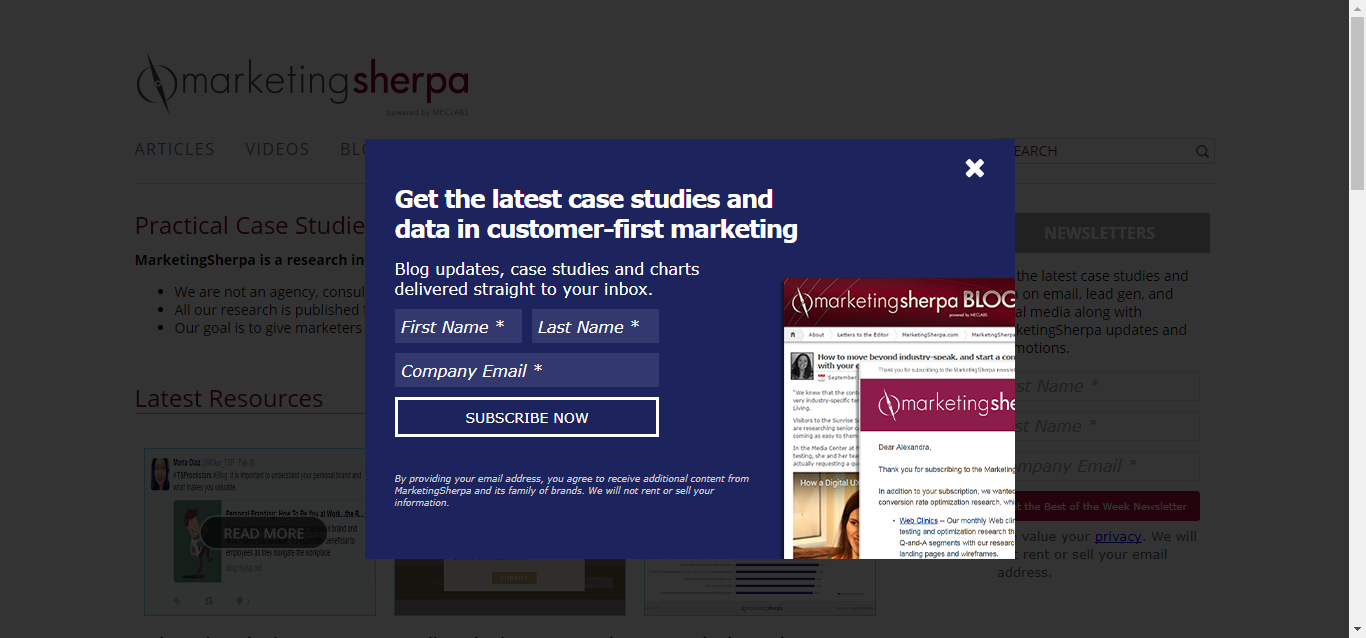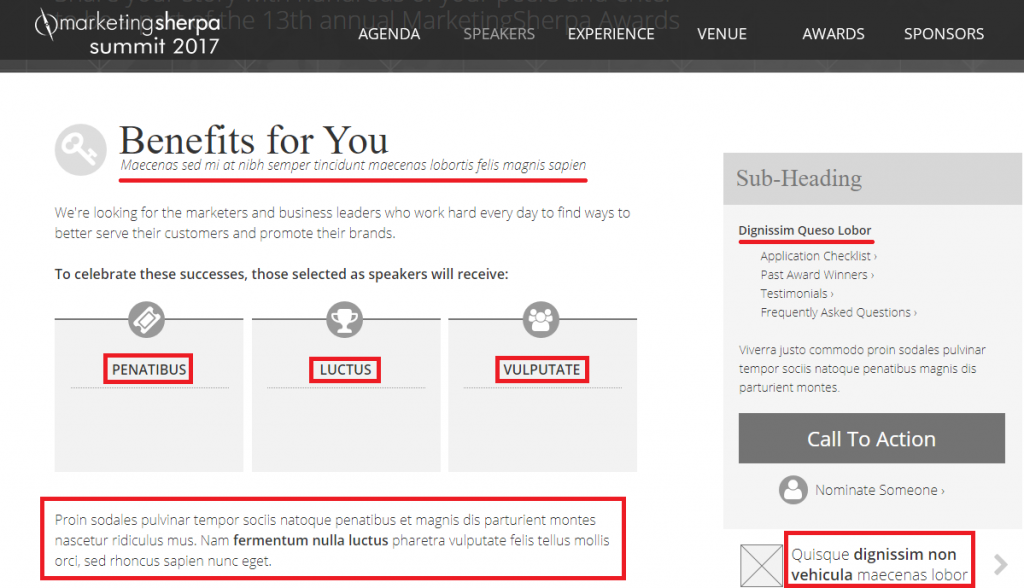Customer-First Marketing: A conversation with Wharton, MarketingSherpa, and MECLABS Institute
One of my favorite music videos is “No Rain” by ‘90s band Blind Melon. In it, a young girl dressed in a bee costume roams around her town, clearly misunderstood by everybody she encounters.
Until …
One day …
… bee girl encounters an entire field full of people in bee costumes. She had clearly found her tribe.
I’ve seen that same delight when those engaged in customer-first marketing and customer-first science meet. And I certainly felt it myself getting to work with Catharine Hays for a few months on the Beyond Advertising: Creating Value Through all Email and Mobile Touchpoints webinar.
Hays is Executive Director of The Wharton Future of Advertising Program and recently interviewed myself along with Flint McGlaughlin, CEO and Managing Director of MECLABS Institute (the parent research organization of MarketingSherpa) on Marketing Matters, a show she co-hosts on the Business Radio channel on Sirius XM powered by the Wharton School.
If you’re a fellow traveler on the path of customer-first marketing and customer-first science, listen to the recording of the radio show below. Or read the below transcript (I called out key concepts with bolded headlines to allow for easy skimming). I hope you feel that same delight of finding your tribe.
And if you do, feel free to let Flint or myself know through Twitter — @FlintsNotes and @DanielBurstein — since we won’t be able to hear you shouting in agreement through your headphone or speakers.
(originally aired on Sirius XM Channel 111, Business Radio powered by The Wharton School)
Catharine Hays: You’re listening to Marketing Matters on Business Radio, powered by the Wharton School.
Welcome back. This is Marketing Matters on Sirius XM’s Business Radio 111. I’m Catharine Hays. I’m the Executive Director of the Wharton Future of Advertising program here. And we’re going to shift gears a little bit to welcome our next guests.
Really, the theme of the show today has been on customer-first marketing, really putting the customer at the front of your marketing and putting the individual, rather than thinking of them as a consumer. So, we spent the last hour really kind of honing in on the Hispanic market and with our last guest, talking about really seeing them from a cultural lens and how open or closed they are to cultural influences, new and old. So, that was pretty interesting.
So, what we’re going to do next is shift gears a little bit, but still have this theme but talk about it more broadly with two wonderful guests. First, we have Flint McGlaughlin. He’s the CEO and Managing Director of MECLABS Institute. Welcome, Flint.














